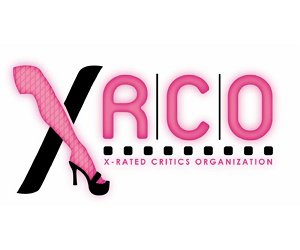Source: ManNet
(BOSTON, MA) — Richard Burt, an English professor at the University of Massachusetts at Amherst [http://www.UMass.edu] and host of a provocative Web site, teaches his students about the modern adaptations of Shakespeare, often focusing on a growing number of porn flicks invoking the Bard.
For the past five years, Henry Jenkins, a Massachusetts Institute of Technology [http://www.MIT.edu] professor, has asked his class to analyze photos from Hustler magazine [http://Hustler.com] and clips from blue movies such as "Deep Throat."
And Hope Weissman, a women’s studies professor at Wesleyan University [http://www.Wesleyan.edu], has required students in her class, "Pornography: Writing of Prostitutes," to produce a work of pornography for their final project.
The three professors are part of a growing movement on college campuses that is testing the bounds of academic freedom by introducing pornography into the classroom. The small but thriving community of professors treats pornography — an industry on which Americans each year spend billions of dollars — as a serious subject for academic inquiry.
Many of the professors shun attention. But others who have written extensively about pornography and teach it in their classes eagerly explain why they are attracted to porn studies.
"To not study pornography is to ignore an absolutely pervasive phenomenon in our culture," said Linda Williams, a film studies professor at the University of California in Berkeley [http://www.Berkeley.edu] who helped pioneer porn studies with her book, "Hard Core: Power, Pleasure, and the Frenzy of the Visible" [http://www.UCPress.edu].
"Hollywood makes about 400 films a year; the porn industry makes 9,000 to 11,000 titles. That means an enormous number of people across the board are watching pornography. It’s not just dirty old men."
Courses on pornography are now offered at schools such as Emerson College [http://www.Emerson.edu], New York University [http://www.NYU.edu], Northwestern University [http://www.NWU.edu], Arizona State University [http://www.ASU.edu], and several campuses in the University of California system [http://www.ucop.edu]. Professors invite porn stars to lecture about subjects such as improving the working conditions of sex workers.
The scholarship is growing, too, professors say. Respected journals such as The Quarterly Review of Film Studies and Human Sexuality [http://gbhap.com/QRFV] are publishing more and more papers on pornography. And academics are increasingly writing books with titles such as "Erotic Faculties" by an art historian at the University of Nevada at Reno [http://www.UNR.edu] and "Porn 101" by a sociology professor at the University of California at Northridge [http://www.CSUN.edu].
There was even an academic forum organized in Los Angeles called the World Pornography Conference, which in 1998 drew professors in fields including sociology, philosophy, English, and film studies.
Many such as Constance Penley, a film studies professor who runs UC Santa Barbara’s Pornography Research Focus Group [http://www.ucsb.edu], attended to spread understanding of their work. But some also went to rebut critics such as Catherine MacKinnon, a University of Michigan Law School [http://www.law.umich.edu] professor who argues that pornography exploits women and desensitizes men to sexual violence, and Pat Robertson [http://www.cbn.com], who once called Penley’s class on pornography "a new low in humanist excess."
"There have been many protests, but pornography has been taught for years, in medical schools, psychology and sociology departments," said Penley.
"What upset people, in my case, is that I study pornography to see what it consists of, not debating whether it is art or deviant. I also teach it as another genre of film, like Westerns or science fiction."
Today, porn-studies professors say, there is less resistance to and outrage about their work, due in part to the flourishing of pornography on home videos, cable, and the Internet.
The study of pornography on campuses emerged about a decade ago, professors say, partly in reaction to the growth of a porn industry that some say nets as much as $14 billion a year, but also as part of a growing movement in academia to study popular culture, gender, and women’s issues.
In fact, most who teach in the field are women. Many of them echo the arguments of Laura Kipnis, a professor of media studies at Northwestern University, who argues that pornography, in the right context, is liberating.
"It’s about removing the stigma and understanding the taboo," said Kipnis, author of "(Male) Desire and (Female) Disgust: Reading Hustler" [http://www.rtvf.nwu.edu/people/kipnis].
Men, however, still face some stigma in teaching pornography. While Jenkins of MIT says he never had any student complain, Peter Lehman, a humanities professor at Arizona State University, once had a printing shop refuse to copy his course packet. Now, Lehman requires all students who take his class on "Sexuality in the Media" to sign a consent form.
"It’s to prevent possible harassment charges," said Lehman, who has co-chaired workshops on porn-pedagogy and is editing an anthology of pornography for college classes. "I don’t want any students to be surprised."
Resistance to pornography in the classroom also affects female professors. In 1999, Wesleyan’s president launched a review of Weissman’s class, and for years antiporn activists have targeted attention-getting professors such as Penley for protest.
At UMass-Amherst, administrators last year pressured Burt to take down his campus Web site, which featured pictures of bare-chested strippers straddling his lap and of his wife dressed as a porn star. Administrators argued the site violated UMass’s acceptable use policy for information technology.
A year later, however, the author of books such as "Unspeakable ShaXXXspeares" has moved the Web site to a commercial server and added content [http://www.NaughtyProfessor.com], mixing links to porn sites and interviews with adult-film directors with descriptions of his classes and their syllabuses.
For Burt and most others in the field, porn studies is merely a natural extension of their work.
"If you’re going to think about Shakespeare adaptations, which is something that I think about," he says in an article posted on his Web site, "then why not Shakespeare porn? It’s one kind of adaptation. It’s a phenomenon, it’s out there, it’s part of the culture, so why not study it?"

















